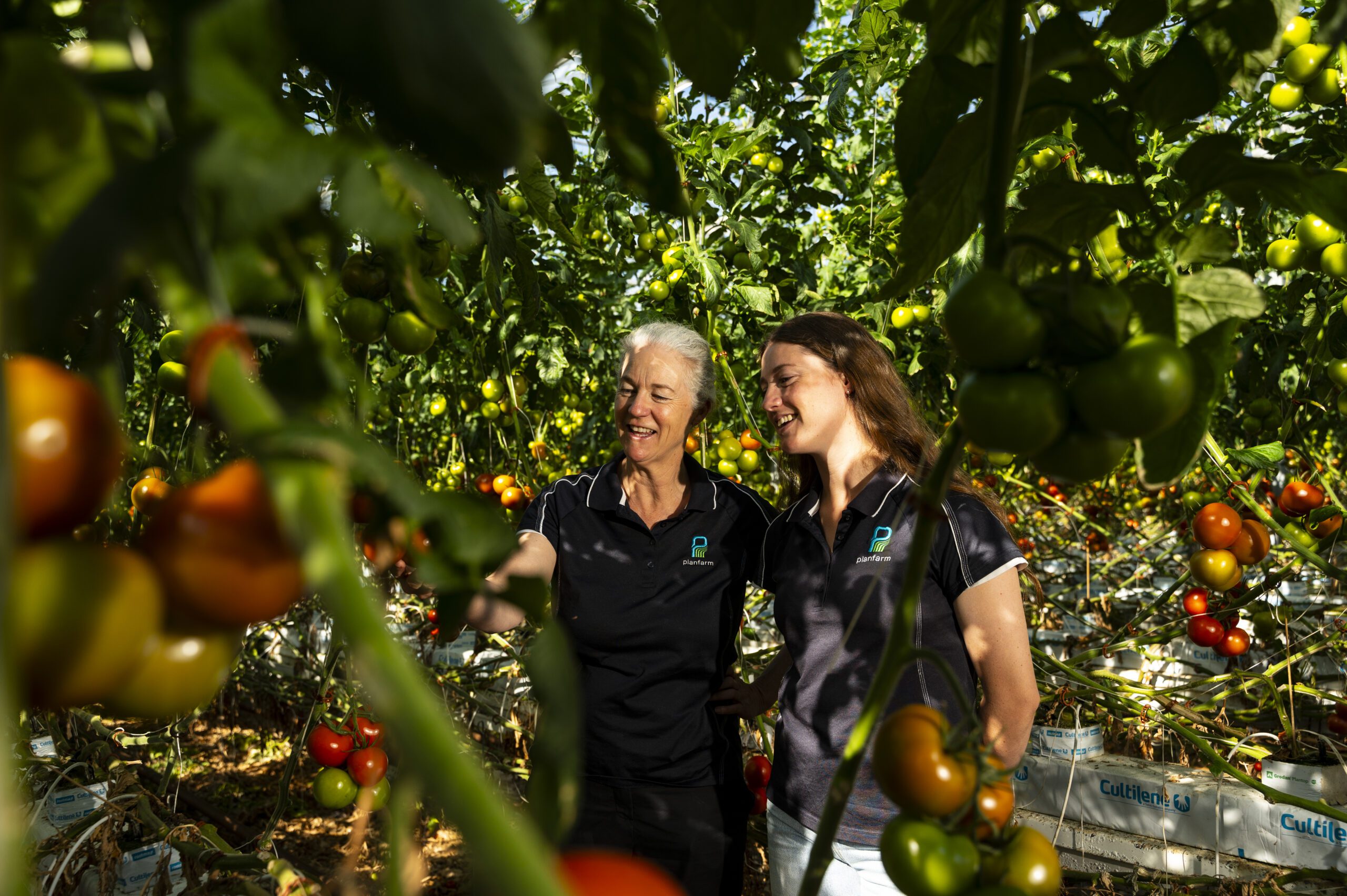The recent release of the 2023 national vegetable and onion benchmarks has
highlighted the vast range of operating profit margins between the more
profitable businesses ($22,900 $/ha), the average ($2,906/ha) and the least
profitable (-$16,000/ha). You have to ask, “What are they doing that is leading
to significantly more profit per hectare?”.
- It must be what they are growing – no, they all grew different crops
- It must be scale – no, they were a variety of different size businesses
- Must be location – no, they included growers from different states and regions across Australia
- They must be spending less – no, they spent more per hectare, especially on hired labour (not family).
The more profitable horticultural farming businesses can best use their operating surplus to make targeted and strategic investment decisions that enable the company to either reduce costs (labour mainly) or generate higher income per hectare. This generates an acceptable return on investment and, in turn, contributes to the overall wealth of the business.
The rule of thumb in farming is that an 8% ROC will double your net worth within 10 years. Therefore, a solid investment in your business should contribute to the ROC to maintain levels of 8% per annum or higher year in and year out.
Where to begin
Before you rush out to ag-tech up, you need a few provisions to aid the decision-making process.
- Firstly, you need a simple and implementable business plan that includes a shared vision that you and your business partners share and some clear and quantifiable business goals.
- Your plan should be visible and accessible so that you can re-visit it often. This will assist with aligning investment decisions with reaching your business goals.
- Prepare a budget. Determine available funds, the impact on cashflow (short to medium term), payment/repayment options and terms.
- Calculate the time it will take for the investment to generate a return on investment and to what extent it should increase profitability.
- Staffing and resourcing for the new investment. What specialist skillset is required to adopt new technology, what support is available and required, what training is required.
- Consider the risks. Production risk, WHS risk, budgetary risk, contractual risk (eg. marketing restrictions).
Current business profile in horticulture
Both the WA state benchmarks in horticulture and national vegetable and onion benchmarks that Planfarm has been involved in have indicated that horticulture is experiencing a tightening of margins and will be impacting the surplus remaining to reinvest in horticultural businesses. In this current economic climate, horticultural businesses must avoid making ad hoc purchases that are not going to a) help your business reach its goals or b) directly deliver a return on your investment in an acceptable time.
The news is not all negative, however. The equity levels in horticulture across the country are sound, albeit these can largely be attributed to increased land and water values in recent years. The increased equity does enable businesses to have some increased borrowing capacity and access to financing options if required in the case where the surplus may not cover the investment cost.
So how do we know if we are investing wisely?
Sifting the solid from the snake oil can be tricky and particularly when slick salespeople make their product sound too good to be true. The following guidelines may assist you to stay in the ‘wise’ lane and not venture into reckless purchasing territory:
- Identify the need within your business. Circle back to your vision and business goals. Does the purchase align with and help you achieve your goals?
- Focus on items that will increase production and saleable yield. These may include new varieties, improved irrigation systems, crop monitoring or spray technology for more timely and effective chemical use.
- Consider items that will reduce costs, particularly labour costs, or gain greater efficiencies per unit. Machinery and automation may not necessarily reduce overall labour usage but allow greater output and utilisation of labour in more cost-effective areas of the business. Another example may be forward and bulk purchasing of fertiliser at lower rates per unit, if you have adequate storage.
- Items that will add value to your product and allow your business to receive higher income (more profit). For example, packaging, storage, or post-harvest technology.
- Do the sums on the return on investment vs keeping existing systems/machinery. A high-cost new tractor vs an older machine with low hours, low repairs, and maintenance costs that can perform the same job but is a bit slower. Which is better for your business?
- What is the data saying? Analyse your business and operational performance using business information systems and data analysis platforms. If you don’t measure, you can’t make effective and targeted decisions.
- Consider investing in non-tangible assets. This could be an investment in the right people for your business or improved systems and processes.
- Get some external advice that can improve your production systems or internal processes to gain efficiencies in business operations, improve WHS, optimise labour use efficiencies.
- Invest some time in looking beyond the gate, outside your area, and outside of your industry for new ideas and improved production or business management systems. Some early adopters are well researched and keep abreast of trends.
- Consider alternative uses of surplus cash to benefit your business. This could involve paying down high interest loans that can’t be restructured or reserving some cash in FMDs to reduce future tax obligations and maintain liquidity.
Risk vs return with investing in new technologies
The stereotypical image of an early adopter is one that is young, financially sound, pro-risk and well educated. While we may not all fit this mould, the key to reducing risk as an early adopter is to do your research and be well informed about the product you are adopting, know the benefits it will bring to your business and the lag time between purchase and increased profitability.
Perceived risks and barriers to adopting new technology include;
- Lack of data around financial benefits, not proven in the field so lack of grower testimonies
- High entry costs for early adoption
- Over capitalisation regarding the turnover or business scale
- High subscription and hidden costs
- Specialist servicing requiring outsourcing of these skills
- Tech company and technology becoming obsolete or bought out by larger tech company
- Flow-on costs with adoption, such as a machine that requires specific row spacing and requires re-planting or altering of existing production system and machinery to allow for new row spacing
- Asset write-down through trading out of existing machinery or tech (e.g., irrigation systems) before it has fulfilled a useful life
The best way to off-set the risks of tech adoption is to know your numbers. Your Planfarm consultant can assist with the analysis to determine if the benefits outweigh the costs of adopting new technology and establish the likely ROI period and level.
What if your surplus is not enough?
We mentioned before about reckless purchasing territory. What we have learned at Planfarm over the fifty years that we have been advising growers with very tight margins in the wheatbelt of WA is that when times are lean, you still need to spend money to make money, but it is the prudent allocation of funds that will see your business through the hard times without eroding your wealth position too much. Tightening your belt and doing away with unnecessary cost items while continuing to invest strategically in items that support a more efficient production system and optimise yields.
During lean times, the true meaning of interrogating your farm investments wisely comes into its own. Businesses that reinvest to grow their wealth and improve business performance will weather the hard times better than those that do not. They will be more resilient.
During periods of little or no cash surplus, you must avoid reckless spending. Keep purchasing aligned with the business goals and implement some accountability or justification for large-cost items.
This is where the cash-flow budget is helpful as there must remain a healthy balance in your business between investing in future earnings without negatively impacting cashflow to do this. Do not rob Peter to pay Paul.
In lean times, you could consider the following strategies to continue targeted purchasing to improve business performance;
- Short-medium term finance, although unsecured loans generally incur higher interest rates and may be cost prohibitive for items that will take longer to generate returns
- Leverage your equity to access capital, horticultural businesses are generally in strong equity positions
- Consider alternative financing arrangements, shop around for equipment finance, competitive rates and repayment terms that match your cashflow
- Access to Government or industry funding and grants. Many incentives exist for investments in technologies that improve productivity, with varying requirements for cash co-contribution, some 50% and some zero.
- Investigate lease options for large capital items such as fruit graders or vegetable harvesting equipment, these may favour your cashflow and reduce upgrade or replacement costs.
So why are the more profitable businesses making more per hectare?
Let’s revisit the vegetable benchmark data and consider why and how the more profitable businesses might make nearly ten times more profit per hectare than the average vegetable business. Perhaps these businesses have used their operating surplus wisely and invested in areas of their business that generate productivity and optimise turning expenses into income. Strategic and targeted decision-making enables their business to endure the shock waves and the hard times.
There are no silver bullets, but strategic business decisions can make your business more resilient and increase wealth over time. It starts with knowing your numbers, and with this, your Planfarm consultant can help inform investment decisions through data analysis, inform on risk and business position, and map out cashflow to match production benefits and financial performance.


